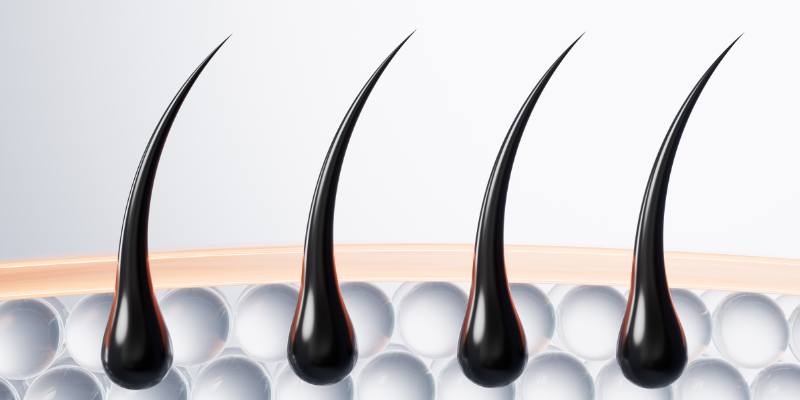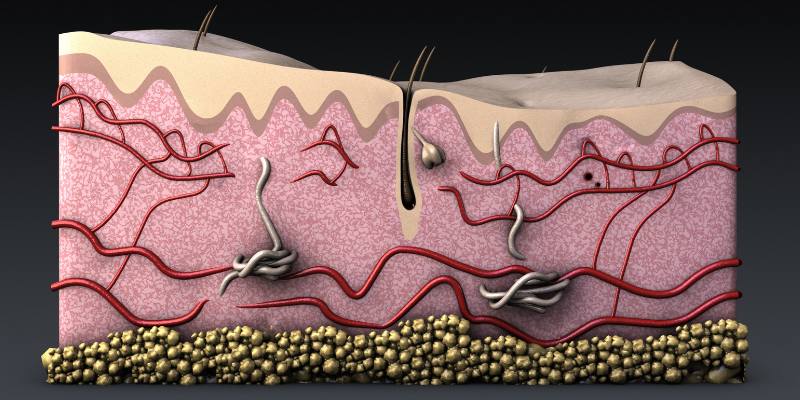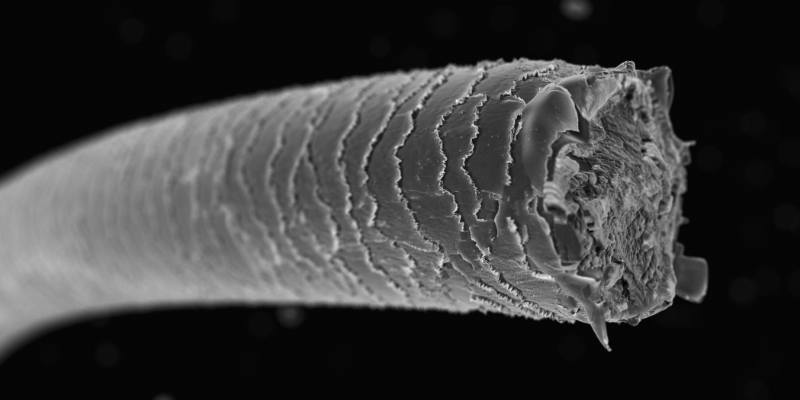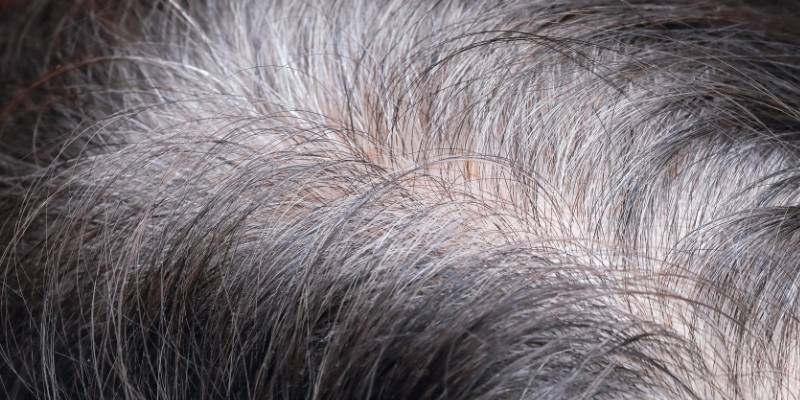A hair follicle is a type of tube (pore) that covers the base and strands of hair.
Hair follicles are located in the top two layers of your epidermis. You are born with more than 5 million hair follicles in your skin and over 1 million on your scalp.
Hair grows from your hair follicles as you become older. Your hair follicle is one of the few systems in the human body that can both degenerate and regenerate.
This procedure encourages hair growth. In this article, we will discuss hair follicles in detail and how they are related to hair loss.
Let’s get started!

Anatomy Of Hair Follicles
Hair follicles are like little factories located under our skin, each with its function to perform.
The dermal papilla, a tiny, cone-shaped structure at the base of the follicle, functions as a power station, giving nutrients to the growing hair via a network of blood vessels. Above it is the hair bulb, which resembles the factory floor.
Cells are constantly dividing and working hard to make new hair. Then there's the hair shaft, the visible part of the hair.
It's like a finished product leaving the factory. It is made up of a protein called keratin, which is responsible for the strength and structure of human hair.
Finally, we have the sebaceous gland, which functions similarly to the maintenance staff. These glands are linked to the follicle and create sebum, an oily material that moisturizes and protects our hair and skin.
So, in simpler terms, hair follicles are like little factories in our skin that produce hair, with different parts working together to keep our hair healthy and growing.
How Does Hair Grow From A Hair Follicle?
Hair grows in cycles within the hair follicle.
The first phase of hair development may take between two and seven years to develop (Anagen).
Development starts at the root (Dermal Papilla) of your hair follicle, where it provides your hair with blood flow and nutrients.
Your hair grows approximately half an inch per month.
The following phase of hair development (Catagen) lasts around two weeks and marks the shift from growing to resting. During this period, your hair separates from its blood supply.
The dormant phase (Telogen) of hair growth occurs when hair breaks or falls out of the follicle. This phase lasts up to four months. Based on a 2014 article, current research indicates that the hair follicles are not simply "resting" during the telogen period.
This phase is marked by a high level of cellular activity, which allows the tissues to renew and develop more hair. In other words, the telogen phase is critical for the development of strong hair. Various follicles experience different stages of the cycle at the same time. Some follicles are growing, whereas others may be dormant.
Some of your hair may be growing, while others start to fall away. According to the American Medical College of Dermatology, a normal human loses about 100 hairs every day.
Approximately 90% of your hair follicles are currently in the anagen phase.
Role Of Hair Follicles
A hair follicle's job is to help you grow hair.
Apart from stimulating hair development, your hair follicles perform the subsequent functions:
- Help in the healing of your skin following an injury or wound.
- Create new vascular structures (angiogenesis).
- Create new neurons in the neurological system (neurogenesis).

Signs Of Disorders Of The Hair Follicles
Each follicle has different symptoms, which may include:
- Hair thinning, hair loss, or restricted hair development.
- Acne is full of fluid bumps or acne on your body.
- Edema (an inflammation).
- A rash that itches.
- A wound that isn't healing has an infection or oozes a white-to-yellow fluid and has a yellow crust.
What Kinds Of Tests Look At Hair Follicles' Wellness?
Each illness has its own set of tests to be diagnosed.
Your healthcare expert will examine your skin and hair and ask about your medical history.
Before completing a test that may include the following:
- Pull And Tug Test: To determine how many hairs fall out, a healthcare professional will gently tug on a tiny bit of your hair. This test will be performed on several head locations of your hair.
- Blood Test: Your doctor will take a small sample of your blood to check for disorders that are causing your symptoms. Blood tests include the ANA test, the CBC test, the anemia test, and the CRP test.
- Biopsy: Your healthcare practitioner will take a small sample of tissue from you to inspect the epidermis under a microscope.
Most Frequent Treatments For Hair Follicle Conditions
Treatment options vary by individual symptoms and may involve anti-inflammatory medications such as corticosteroids.
- Minoxidil is a topical medication that promotes hair growth.
- Remove pimples using salicylic acid, azelaic acid, or benzoyl peroxide cleanser/cream.
- Use antibiotics to treat germs and illnesses.
- Anti-itch medications.
- Consulting a mental health practitioner to alleviate stress.
- Hair transplants.

How Hair Follicles Are Related To Hair Loss?
By following ways hair follicles are related to hair loss.Alopecia Areata
The condition known as alopecia areata is brought on by the immune system attacking hair follicles, resulting in hair loss.
The skin's hair-forming structures are called hair follicles. Although alopecia areata can cause hair loss anywhere on the body, it typically affects the head and face. Usually, hair loss occurs in quarter-sized, spherical, tiny patches, but in certain situations, the amount of hair loss is greater.
The majority of those who have the illness are asymptomatic and in good condition. Each person experiences alopecia areata differently. Some experience hair loss periodically throughout their lives, while others only experience it once.
Additionally, recovery is erratic; some people's hair may grow back completely, while it does not in others. Alopecia areata has no known cure; however, there are therapies that can hasten the regrowing of hair.
In order to help people deal with hair loss, resources are also available.
Who Develops Areata Alopecia?
Alopecia areata can affect anyone.
It impacts all racial and ethnic groups, and it is equally experienced by men and women. The majority of people experience it in their teenagers, twenties, or thirties, but it can start at any age.
It seems to be more widespread and progressing in children under the age of ten.
Alopecia Areata Types
Alopecia Areata is classified into three primary types: Universal Alopecia.
This rare kind causes the hair on the scalp, face, and rest of the body to fall out completely or almost completely. Alopecia areata in patches.
This form, the most prevalent, causes hair loss on the scalp or in other areas of the body in one or more coin-sized patches. Alopecia totalis.
This type causes complete or almost total hair loss on the scalp.

Hair Loss and Follicles
Folliculitis Decalvans
Hair loss caused by folliculitis decalvans, an inflammatory illness that destroys hair follicles, can often come with redness, swelling, and itching sores on the scalp referred to as pustules.
This form of hair loss is irreversible, but dermatologists can prescribe medicine that can reduce signs and, in some cases, halt the trend of hair loss.
Cicatricial Alopecia
Cicatricial alopecia, also referred to as scarring alopecia, is an uncommon kind of hair loss in which inflammation ends hair follicles and scar tissue forms in their stead.
After scar tissue grows, hair does not regenerate. Hair loss can begin gradually so that signs are not visible, or it might occur all at once. Other symptoms include intense itching, swelling, and red or white sores on the scalp that are like an infection. This form of hair loss can happen at any age and affects both men and women.
The type of cicatricial alopecia that is causing your symptoms determines the appropriate treatment.
Telogen Effluvium
Telogen effluvium is a temporary form of hair loss characterized by excessive shedding of hair during the telogen phase of the hair growth cycle.
Unlike other types of hair loss, telogen effluvium does not involve follicle miniaturization or permanent damage to the hair follicles. Instead, it occurs when a significant number of hair follicles simultaneously enter the telogen or resting phase prematurely, usually in response to physiological or psychological stressors.
Common triggers of telogen effluvium include illness, surgery, childbirth, hormonal changes (such as those occurring after stopping birth control pills or during menopause), rapid weight loss, and nutritional deficiencies.
The shedding typically peaks around two to three months after the triggering event and resolves spontaneously within six to nine months as the affected follicles transition back to the anagen or growth phase.
How Wig Medical Can Help
At Wig Medical, we help people with hair loss, including those feeling down.
Our wigs aren't just for looks – they can also lift spirits and fight depression. Hair follicles are like tiny factories that make hair grow.
Sometimes, things like alopecia areata or hormone issues mess up this process, causing hair loss. But treatments can help. If you're feeling low because of hair loss, come see us.
We're here to help you feel better and look your best.

